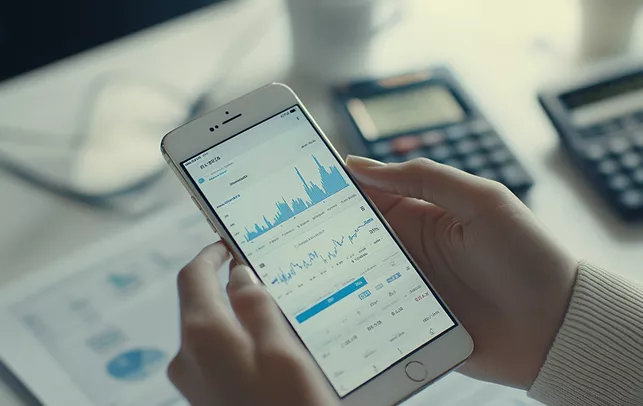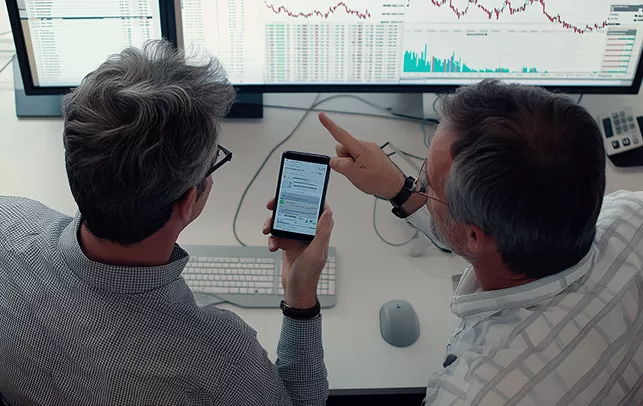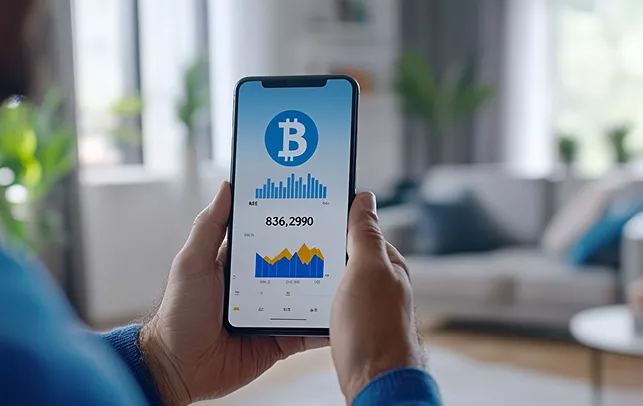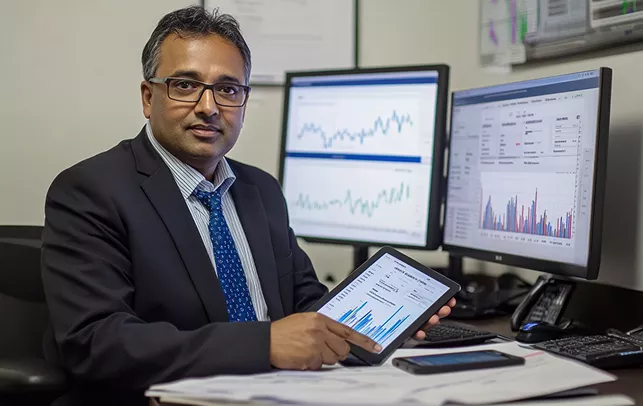Always up-to-date
Our experts continuously werify broker data to provide the most up-to-date information
Lest updated on
May 23, 2025
We double-check broker fee details each month which is made possible through parthner paid advertising. Learn more this here.
Best Forex Brokers with Micro Accounts in 2025
Forex trading opens an exciting world where small steps can lead to big wins, especially with micro accounts. These accounts let traders with limited funds trade tiny volumes, perfect for beginners or those testing strategies. We will explore the best forex brokers offering micro accounts in 2025, highlighting their features, trade conditions, and tools. You’ll learn what micro accounts are, their pros and cons, top strategies, and how to avoid common mistakes. If you’re new or budget-conscious, we’ve got a bit of clear advice to trade smart. Let’s check out the best micro account brokers for 2025!


What is a Forex Micro Account?
A forex micro account lets traders use small lot sizes, making the market accessible with low risk. Unlike standard accounts, micro accounts trade in micro-lots (1,000 units of currency), compared to 100,000 units for standard lots. This means a $0.01 price move on a micro-lot equals $0.10, not $10, suiting small budgets. Micro accounts often need minimal deposits, sometimes $1, and offer high leverage to boost trade power. They’re ideal for practicing real trades without big losses, helping beginners build confidence.
How Does a Micro Forex Account Work?
Micro accounts function like standard ones but scale down trade sizes. You open an account with a broker, deposit funds, and trade micro-lots (0.01 lots). For example, on EUR/USD at 1.1050, a 0.01-lot buy risks $0.10 per pip. Platforms like MT4 show your balance, and you set stop-losses to cap losses. Brokers like FBS offer micro accounts with $5 deposits, letting you trade 10 micro-lots with $50. High leverage, like 1:1000, amplifies gains but risks quick losses. Demo accounts mimic micro trades for practice.





Micro vs. Standard Forex Accounts: Key Differences
Micro and standard accounts differ in scale and cost. Micro accounts need $1–$100 deposits; standard ones often require $1,000+. Micro-lots (1,000 units) contrast with standard lots (100,000 units), so a 10-pip move on EUR/USD costs $1 on a micro-lot, $100 on a standard lot. Spreads on micro accounts, like 1.5 pips on OANDA, may be higher than standard accounts’ 0.8 pips. Micro accounts suit small budgets, while standard accounts fit high-volume traders. Micro accounts often limit maximum trade sizes, capping scalability.
| Feature | Micro Account | Standard Account |
| Minimum Deposit | $1–$100 | $1,000+ |
| Lot Size | 0.01 (1,000 units) | 1.0 (100,000 units) |
| Pip Value | $0.10 | $10 |
| Spreads | 1.5–3 pips | 0.8–1.5 pips |
Who Should Use a Micro Forex Account?
Micro accounts suit beginners, low-budget traders, and strategy testers. New traders use them to learn real markets with minimal risk—$10 can fund 10 micro-lot trades. Budget-conscious traders, with $50 or less, trade comfortably without stress. Experienced traders test strategies, like scalping, on micro accounts before scaling up. For example, a beginner on XTB’s micro account trades USD/JPY at 150.20, risking $1 on a 10-pip move. Micro accounts don’t suit high rollers aiming for big profits fast, as small lot sizes limit gains. Start with a demo to explore micro trades.
Best Forex Brokers with Micro Accounts in 2025
Advantages and Disadvantages of Micro Forex Trading
Micro forex accounts open the market to traders with small budgets, offering unique benefits and challenges. Whether you’re new or testing strategies, a micro forex trading account lets you trade with low stakes while learning real market dynamics. Below, we explore the pros, cons, and when to move beyond a micro account forex, helping you decide if it’s right for your 2025 trading journey.
Pros of Using a Micro Trading Account Forex
Forex trading micro accounts shine for their low entry and flexibility. Low deposits, like $5 at forex micro account brokers such as FBS, let anyone start [web:1]. Micro-lots (0.01, or 1,000 units) mean small risks—a 20-pip loss on EUR/USD costs $2, not $200, perfect for a micro account forex. For example, you trade GBP/USD at 1.3000 on AvaTrade’s micro forex account, risking $1 with a 10-pip stop-loss. This setup suits strategy testing, like scalping, in real conditions. High leverage, up to 1:1000 at OANDA, boosts small funds, though caution is needed [web:6]. Demos from the best forex micro account brokers let you practice risk-free. A micro forex trading account builds skills with minimal stress, helping you trade confidently.
Cons of Micro Forex Accounts
Micro forex accounts have limits that challenge profitability. Small lot sizes in micro forex cap gains—a 20-pip move on a 0.01-lot EUR/USD trade earns $2, slowing growth for a forex micro account. Higher spreads, like 1.5 pips on OANDA’s micro forex account vs. 0.8 pips on standard accounts, cut profits [web:6]. For example, a 2-pip spread on a 0.01-lot trade costs $0.20, 20% of a $1 gain. Some forex micro account brokers, like XTB, charge commissions, adding costs [web:12]. Scalability is restricted—micro forex accounts limit trade sizes, capping a $100 account at 0.1 lots with 1:100 leverage. High leverage risks quick losses, wiping out small balances. Traders must watch fees closely when using micro forex trading accounts to avoid surprises.
When Should You Upgrade from a Micro to a Standard Account?
Knowing when to upgrade from a forex micro vs standard account depends on your progress. Move to a standard account when you’re consistently profitable, with a 60% win rate over three months, and have $1,000+ in your micro account forex. For example, if your $200 micro forex account on FOREX.com grows to $1,500 through steady swing trades, a standard account offers lower spreads (0.8 pips vs. 1.5) and larger lots (1.0 vs. 0.01) [web:6]. Upgrade when micro forex profits, like $2 daily, feel too small for your goals. Standard accounts raise risks, a 10-pip loss costs $100, not $10, so test them on demos first. Forex micro account brokers like AvaTrade allow easy switches. Confirm discipline and a solid plan before scaling up to avoid losses.
| Pros | Cons |
| Low deposits ($1–$10) open micro account forex | Small lots limit micro forex profits |
| Micro-lots reduce risk ($0.10/pip) | Higher spreads (1.5 pips) cut gains |
| Ideal for strategy testing in micro forex trading | Commissions at some forex micro accounts |
| High leverage boosts small micro forex accounts | Limited scalability for micro forex accounts |
| Demos ease learning with forex micro account brokers | High leverage risks quick losses |
Best Forex Brokers Offering Micro Accounts
Micro accounts allow traders to start with small capital, trading lots as low as 0.01 (1,000 units). In 2025, several brokers excel in offering micro accounts with competitive features, tight spreads, and robust platforms. Below, we review seven top brokers: AvaTrade, OANDA, XTB, FOREX.com, XM, Pepperstone, and IG, each with detailed insights, pros, and cons.
AvaTrade
AvaTrade, regulated by the Central Bank of Ireland and ASIC, is ideal for beginners due to its user-friendly AvaTradeGo platform and micro accounts with a minimum lot size of 0.01. With spreads starting at 0.9 pips and no commissions, it’s cost-effective. AvaTrade offers over 1,260 instruments, including forex, CFDs, and cryptocurrencies, and supports MT4, MT5, and social trading via ZuluTrade. Its educational resources, like AvaAcademy, are top-tier, and a $100 minimum deposit makes it accessible. However, research tools are limited, and retail pricing could be more competitive.
Pros:
- Low spreads (0.9 pips) and no commissions
- Comprehensive educational content via AvaAcademy
- Supports MT4, MT5, and AvaTradeGo
- Strong regulatory oversight (ASIC, CySEC).
Cons:
- Limited research tools
- Retail pricing less competitive.
Tip: Set trade goals in AvaTradeGO to stay disciplined.
OANDA
OANDA, CFTC-regulated, excels for micro accounts with no minimum deposit and 0.01-lot trades [web:6]. EUR/USD spreads start at 1.4 pips on the Standard Account. The OANDA Trade app offers 100+ indicators, like RSI. For example, on AUD/USD at 0.6700, RSI at 60 signals a buy with a 10-pip stop-loss at 0.6690 and a 20-pip target at 0.6720, risking $1. OANDA’s articles cover leverage risks, and its demo is ideal for practice. Tools like MotiveWave suit technical analysis. Spreads are higher than standard accounts, and support can lag. Test the demo for three weeks.
Pros:
- No minimum deposit or trade size restrictions
- Nano trading available (1 unit)
- Strong regulation (7 Tier-1 licenses)
- Transparent pricing, no withdrawal fees
- MotiveWave tools.
Cons:
- Limited educational resources
- Spreads higher than industry average (1.4 pips all-in).
Tip: Use RSI on OANDA’s demo to spot trends.
XTB
XTB, regulated by FCA and CySEC, offers micro accounts with no minimum deposit and 0.01-lot trades [web:12]. EUR/USD spreads start at 0.1 pips, commission-free. xStation 5’s customizable charts and risk calculators ease trades. For example, you buy EUR/GBP at 0.8300 with a 15-pip stop-loss at 0.8285 and a 30-pip target at 0.8330, risking $1.50. XTB’s 200+ lessons teach technicals, and a $100,000 demo helps practice. Negative balance protection is a plus. Inactivity fees ($10/month after a year) and no MetaTrader support are drawbacks. Practice on xStation 5 for four weeks.
Pros:
- Tight spreads (0.5 pips) and no commissions
- No minimum deposit
- Excellent educational resources
- xStation 5 platform is intuitive.
Cons:
- Limited social trading options
- Unavailable in the U.S.
Tip: Test risk calculators on XTB’s demo.
FOREX.com
FOREX.com, CFTC/NFA-regulated, supports micro accounts with a $100 minimum and 0.01-lot trades [web:6]. EUR/USD spreads start at 1.2 pips (Standard Account) or 0.0 pips (RAW Account, $7 commission per $100k). The mobile app includes moving averages. For example, you buy USD/CAD at 1.3500 with a 10-pip stop-loss at 1.3490 and a 20-pip target at 1.3520, risking $0.80. Trading Academy videos cover risk, and the demo mirrors live markets. RAW Account commissions raise costs, and advanced tools may confuse. Test the demo for three weeks.
Pros:
- Low minimum deposit ($100)
- RAW account with 0.0 pip spreads
- Strong mobile platform
- Active Trader Program benefits.
Cons:
- Higher spreads on Standard accounts
- Complex for beginners.
Tip: Practice stop-losses on FOREX.com’s demo.
XM
XM, regulated by ASIC and CySEC, is a top choice for micro accounts, allowing trades from 0.01 lots with a $5 minimum deposit. Spreads start at 1 pip on Standard accounts and 0.6 pips on Ultra Low accounts, with no commissions. XM offers MT4, MT5, and over 1,000 instruments. Its VIP Education Package includes proprietary indicators, but spreads are less competitive (1.7 pips average for EUR/USD), and research tools are basic.
Pros:
- Low $5 minimum deposit
- No commissions on micro accounts
- MT4/MT5 with extra indicators
- Wide range of instruments.
Cons:
- Higher-than-average spreads
- Limited research tools.
Pepperstone
Pepperstone, regulated by ASIC and FCA, offers micro accounts with 0.01 lot trading and no minimum deposit. Spreads start at 0.1 pips on Razor accounts with a $7 commission per lot, or 1 pip on Standard accounts. It supports MT4, MT5, and cTrader, with over 1,200 instruments. Pepperstone excels in advanced trading features, but its educational content is weaker, and customer support isn’t 24/7.
Pros:
- Tight spreads (0.1 pips on Razor)
- No minimum deposit
- Multiple platforms (MT4, MT5, cTrader)
- Advanced forex micro trading tools.
Cons:
- Limited educational resources
- Customer support not 24/7.
IG (tastyfx for U.S.)
IG, through its U.S. brand tastyfx, is CFTC-regulated and offers micro accounts with 0.01 lot trading. Spreads average 1 pip, with no commissions. IG’s platform is user-friendly, offering 80+ forex pairs and robust research tools. It’s ideal for U.S. traders, but non-U.S. clients face higher fees, and educational content is less extensive than AvaTrade’s. A $250 minimum deposit applies for non-U.S. accounts.
Pros:
- Competitive spreads (1 pip)
- Strong regulation for U.S. traders
- User-friendly platform
- Robust research tools.
Cons:
- Higher fees for non-U.S. clients
- Limited educational content.
How to Choose the Best Micro Forex Broker?
Pick a micro account broker based on key factors.
Step 1: Evaluate Costs—Compare spreads and commissions, prioritizing brokers with low fees. For instance, XTB offers tight spreads from 0.1 pips, outperforming OANDA’s 1.4-pip average.
Step 2: Verify Regulation—Check if the broker is regulated by reputable authorities like the CFTC, FCA, or ASIC for security. Brokers like AvaTrade, OANDA, XTB, and FOREX.com all hold Tier-1 licenses.
Step 3: Assess Platform Usability—Choose a user-friendly platform suited for beginners, such as XTB’s xStation 5 or AvaTrade’s AvaTradeGO, which simplifies trading.
Step 4: Check Accessibility—Look for a low or no minimum deposit (e.g., OANDA’s $0 or XM’s $5) and a demo forex trading micro account to practice risk-free. For example, try FOREX.com’s demo to trade USD/JPY with virtual $10,000.
Step 5: Review Trading Conditions—Compare leverage options (e.g., 1:50 to 1:1000) and secure negative balance protection to limit losses.
Step 6: Research Reputation—Read user reviews on trusted sites like ForexBrokers.com to confirm reliability and trust scores.
Step 7: Prioritize Education—Select brokers with robust learning resources, like XTB’s 200+ lessons or AvaTrade’s AvaAcademy, to build skills quickly and trade confidently.
Trading Platforms for Micro Forex Trading
Micro forex trading, with lot sizes as low as 0.01 (1,000 units), demands platforms that balance simplicity, functionality, and precision. Platforms like MetaTrader 4 (MT4), MetaTrader 5 (MT5), xStation 5, AvaTradeGO, cTrader, OANDA Trade, and TradingView cater to micro traders, each offering unique tools for charting, execution, and risk management. Below, we explore these platforms in detail, highlighting their features, suitability for micro trading, and practical examples.
MetaTrader 4 (MT4)
MT4, offered by brokers like AvaTrade, XM, and Pepperstone, is a cornerstone for micro traders due to its simplicity and reliability. It supports 0.01-lot trades, making it ideal for small accounts. MT4’s charting tools include 30+ indicators (e.g., RSI, Moving Averages), and its Expert Advisors (EAs) enable automated trading. For example, on AvaTrade’s MT4, you can trade EUR/USD at 0.01 lots with a 10-pip stop-loss, risking $1 per trade. Its lightweight design suits beginners, but it lacks advanced asset classes like stocks. Demo accounts are widely available to test strategies.
Key Features:
- 0.01-lot trading
- 30+ indicators, 9 timeframes
- EA support for automation
- Mobile and desktop versions
Best For: Beginners seeking simplicity and automation.
MetaTrader 5 (MT5)
MT5, used by FOREX.com, XM, and Pepperstone, builds on MT4 with enhanced features. It supports micro trading (0.01 lots) and adds stocks, futures, and more asset classes. MT5’s 38 indicators, 21 timeframes, and faster processing suit advanced micro traders. For instance, on FOREX.com’s MT5, you can trade USD/JPY at 0.01 lots with a 15-pip take-profit, leveraging its economic calendar for news-based trades. However, its interface feels complex for novices, and EA compatibility differs from MT4. Demos help assess its fit.
Key Features:
- 0.01-lot trading
- 38 indicators, 21 timeframes
- Multi-asset support (stocks, futures)
- Depth of Market (DOM) tool
Best For: Traders wanting multi-asset micro trading.
xStation 5
XTB’s proprietary xStation 5 is a standout for micro traders, offering 0.01-lot trades and an intuitive interface. Its risk calculator helps set precise stop-losses, crucial for small accounts. For example, trading GBP/USD at 0.01 lots, you can use xStation’s heatmaps to spot trending pairs and set a 12-pip stop-loss. With 80+ indicators and sentiment data, it rivals MT5 but is easier to navigate. Mobile apps are seamless, though it’s exclusive to XTB. Demo accounts let you explore its tools risk-free.
Key Features:
- 0.01-lot trading
- Risk calculator, sentiment data
- 80+ indicators, heatmaps
- Fast execution, mobile-friendly
Best For: Beginners prioritizing usability and risk tools.
AvaTradeGO
AvaTrade’s proprietary AvaTradeGO platform is tailored for micro traders, supporting 0.01-lot trades and a mobile-first experience. Its dashboard offers market trends and social trading via integration with ZuluTrade. For example, you can copy a trader’s 0.01-lot AUD/USD position with a 20-pip stop-loss. AvaTradeGO’s 50+ indicators and one-tap execution are beginner-friendly, but it lacks MT5’s depth for advanced analysis. A $100 minimum deposit and demo account make it accessible for testing.
Key Features:
- 0.01-lot trading
- Social trading via ZuluTrade
- 50+ indicators, trend dashboard
- Mobile-optimized interface
Best For: Mobile traders and social trading enthusiasts.
cTrader
Pepperstone’s cTrader is a premium platform for micro trading, supporting 0.01-lot trades with advanced charting and fast execution. Its 70+ indicators and Level II pricing suit technical traders. For instance, on cTrader, you can trade EUR/GBP at 0.01 lots, using its backtesting tool to optimize a 10-pip stop-loss strategy. cTrader’s sleek design outshines MT4, but it’s less beginner-friendly and has fewer EAs. Demo accounts help you master its features.
Key Features:
- 0.01-lot trading
- 70+ indicators, Level II pricing
- Advanced backtesting tools
- Customizable interface
Best For: Technical traders seeking precision.
OANDA Trade
OANDA’s proprietary OANDA Trade platform supports micro and nano trading (down to 1 unit), perfect for ultra-small accounts. Its 50+ indicators and overlay tools (e.g., Fibonacci retracements) enhance analysis. For example, trade USD/CAD at 0.01 lots with a 15-pip stop-loss, using OANDA’s MarketPulse for news insights. The platform integrates with TradingView, but its tools are less extensive than xStation 5. No minimum deposit and demo accounts make it approachable.
Key Features:
- 0.01-lot and nano trading
- 50+ indicators, TradingView integration
- MarketPulse news feed
- Mobile and web versions
Best For: Traders wanting flexible lot sizes.
TradingView
Offered by OANDA and Pepperstone, TradingView is a web-based platform with powerful charting for micro trading (0.01 lots). Its 400+ indicators and community scripts enable custom strategies. For example, trade EUR/USD at 0.01 lots with a 10-pip stop-loss, using Pine Script to automate entries. TradingView’s social features let you follow top traders, but it lacks desktop depth and native execution speed. Demos via brokers help test its charting prowess.
Key Features:
- 0.01-lot trading
- 400+ indicators, Pine Script
- Social trading community
- Web-based, mobile-friendly
Best For: Charting enthusiasts and social traders.
Account Types: Micro vs. Mini vs. Standard
Forex trading offers different account types to match your experience and goals: micro, mini, and standard. Each has unique features, lot sizes, deposit requirements, and risk levels, making them suitable for different traders.
Micro Accounts
Micro accounts are perfect for beginners. They allow trading in tiny 0.01-lot sizes (1,000 units of currency), requiring low deposits, typically $1 to $100. For example, brokers like XM and OANDA offer micro accounts with no minimum deposit. The pip value is small, around $0.10 per pip, so a 10-pip move on EUR/USD risks or gains $1. Spreads, like OANDA’s 1.4 pips, are higher, but the low risk helps new traders learn. Profits are limited, but losses are manageable, making micro accounts ideal for testing strategies with minimal capital.

Mini Accounts
Mini accounts suit traders ready to grow. They use 0.1-lot sizes (10,000 units) and require deposits of $100 to $500. For instance, FOREX.com’s mini accounts start at $100. The pip value is $1, so a 10-pip move equals $10. Spreads are tighter, around 1.0 pips with brokers like Pepperstone, balancing cost and opportunity. Mini accounts offer more profit potential than micro accounts while keeping risks moderate, perfect for traders with some experience.
Standard Accounts
Standard accounts are for seasoned traders. They involve 1.0-lot sizes (100,000 units) and deposits of $1,000 or more. AvaTrade’s standard accounts, for example, start at $1,000. The pip value is $10, so a 10-pip move means $100. Spreads are lowest, often 0.9 pips, but the high risk suits professionals. Choose micro to start, mini as skills improve, and standard when you’re confident and well-funded.
Spreads and Fees on Micro Accounts
Spreads and fees impact micro account profits. XTB’s 0.1-pip EUR/USD spreads are low, while OANDA’s 1.4 pips are higher. Commissions, like FOREX.com’s $7 per $100k, add costs. A 2-pip spread on a 0.01-lot trade costs $0.20, significant for a $10 account. For example, a 10-pip gain on EUR/USD earns $1, but a 2-pip spread takes 20%. Choose low-spread brokers and trade major pairs like EUR/USD. Check withdrawal fees—XTB charges none.
Leverage and Margin on Micro Accounts
Micro accounts offer leverage from 1:30 (AvaTrade) to 1:1000 (OANDA), amplifying trade power. A $10 account with 1:100 leverage controls $1,000. For example, a 0.01-lot EUR/USD trade at 1.1050 needs $11 margin at 1:100. High leverage boosts gains—a 10-pip move earns $1—but a 10-pip loss wipes out $1. Use low leverage (1:50) to limit risks. Negative balance protection, offered by all four brokers, caps losses. Practice leverage on demos to avoid margin calls.
Best Forex Trading Strategies for Micro Accounts
Micro accounts need strategies that maximize small trades while controlling risks.
Scalping on a Micro Forex Account
Scalping seeks quick profits from small price moves, ideal for micro accounts with low capital. On XTB’s micro account, you trade EUR/USD on a 5-minute chart, buying at 1.1050 with a 5-pip stop-loss at 1.1045 and a 10-pip target at 1.1060, risking $0.50. Use Bollinger Bands to spot entries—buy when prices touch the lower band. Scalping suits active sessions (London, 8 AM GMT). However, high spreads (1.4 pips on OANDA) cut profits, and some brokers limit scalping. XTB and FOREX.com allow it. Practice on a demo for two weeks.

Swing Trading for Micro Account Traders
Swing trading captures larger price swings over days, fitting micro accounts for steady gains. On AvaTrade’s micro account, you trade USD/JPY on a 4-hour chart, buying at 150.20 with a 20-pip stop-loss at 150.00 and a 40-pip target at 150.60, risking $2. Use a 50-period moving average for trend confirmation. Swing trading needs patience but avoids scalping’s high spreads. Low capital limits position sizes, so focus on major pairs. Test swings on a demo for three weeks to learn timing.
Risk Management for Micro Forex Traders
Risk management protects micro accounts from quick losses. Risk 1–2% per trade—for a $50 account, that’s $0.50–$1. Set stop-losses; on FOREX.com, a 0.01-lot USD/CAD trade at 1.3500 has a 10-pip stop-loss at 1.3490. Use micro-lots and a 1:2 risk-reward ratio (risk 5 pips, gain 10). Avoid 1:1000 leverage—stick to 1:50. Log trades in a journal to track errors. For example, a $1 loss on EUR/USD signals overtrading. Practice risk rules on a demo for a month.
Common Mistakes When Trading on a Micro Account
Avoiding pitfalls helps micro traders stay profitable and grow skills.
Overleveraging: The Risks of High Leverage on Micro Accounts
High leverage, like 1:1000, risks wiping out micro accounts. A $10 account trading 0.1 lots on EUR/USD loses $10 on a 10-pip move, ending the account. Use 1:50 leverage to limit losses. For example, a 0.01-lot trade at 1:50 risks $1 on a 10-pip loss. Practice low leverage on OANDA’s demo to stay safe.
Ignoring Spreads and Commissions
High spreads and commissions eat micro profits. A 2-pip spread on a 0.01-lot EUR/USD trade costs $0.20, 20% of a $1 gain. XTB’s 0.1-pip spreads save more than OANDA’s 1.4 pips. Check fees—FOREX.com’s $7 commission per $100k adds up. Trade major pairs and compare costs on demos.

Trading with Unrealistic Expectations
Micro accounts won’t make you rich fast. A 20-pip gain on a 0.01-lot trade earns $2, not $200. Expect small, steady gains, like $5 weekly on a $50 account. Set realistic goals on AvaTradeGO, such as 10 pips daily, and practice patience on demos to avoid chasing big wins.
Lack of a Trading Plan
Trading without a plan leads to random losses. A clear plan, like scalping EUR/USD with a 5-pip stop-loss on XTB, keeps you focused. Define entry, exit, and risk rules. For example, buy at 1.1050 if RSI is 60. Log trades and test plans on FOREX.com’s demo for two weeks.
What is Next?
Micro accounts in 2025 make forex accessible, letting beginners and budget traders trade with confidence. Brokers like XTB, AvaTrade, OANDA, and FOREX.com offer low deposits, easy platforms, and strong education. Use strategies like scalping or swing trading, manage risks with 1% trade limits, and avoid mistakes like overleveraging. Start with a demo to test micro trades, pick a regulated broker, and set small goals. Ready to trade? Open a micro account with one of these brokers and take your first step. Share your plans or ask questions below, we’d love to hear from you!
FAQ: Forex Brokers with Micro Accounts
What is the Best Forex Broker for Micro Accounts?

How Much Money Do I Need to Start a Micro Forex Account?

What is the Minimum Lot Size for Micro Accounts?

Can I Use a Micro Forex Account for Scalping?

What is the Best Trading Platform for Micro Forex Trading?

Do Micro Forex Accounts Have Higher Spreads?

What is the Difference Between Micro and Mini Forex Accounts?

Can I Switch from a Micro to a Standard Forex Account?

Is a Micro Forex Account Good for Beginners?

How Profitable is Trading on a Micro Forex Account?




